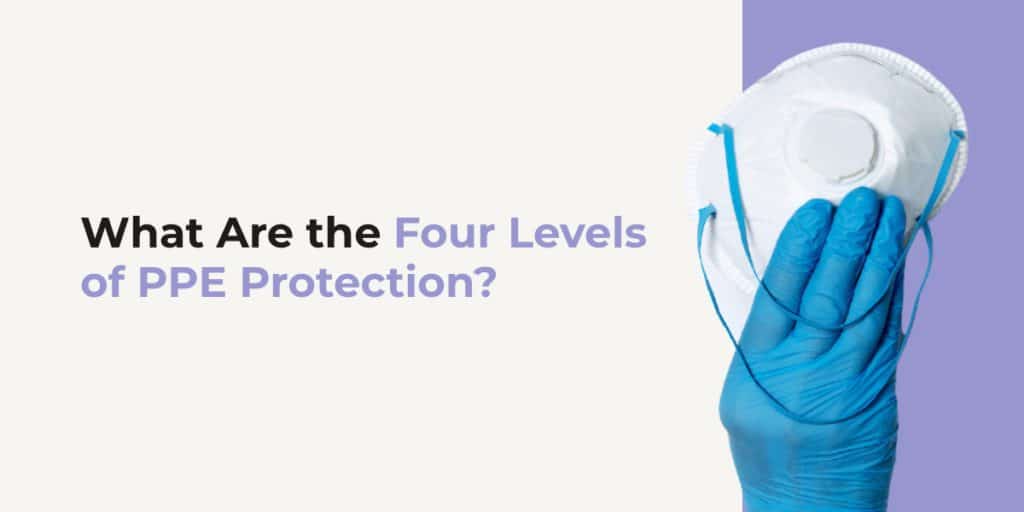
What Are the Four Levels of PPE Protection?
Personal protection equipment (PPE) works to keep professionals in healthcare, biochemical, food service and other industries safe from environmental hazards. Whether employees have to make contact with a dangerous surface or breathe in challenging conditions, providing the correct gear can reduce the chances of employees becoming ill or getting injured.
There are four main levels of PPE, and each variety is used in a different circumstance.
The Levels of PPE
The Occupational Safety and Health Administration (OSHA) outlines four distinct levels of PPE. Each category contains types of equipment employees should use to perform job tasks based on what they are likely to encounter in a given setting.
1. Level A
Level A PPE offers the highest level of protection against respiratory hazards, skin exposures and contaminants that can interfere with the eyes. Equipment users will wear a full-body suit and run an air respirator for airflow. Some of the main aspects of Level A PPE include:
- Positive pressure, self-contained breathing apparatus approved by the National Institute for Occupational Safety and Health (NIOSH).
- Chemical-resistant bodysuit (fully encapsulated).
- Steel-toe boots with outer chemical resistance.
- Gloves with inner and outer layers that are chemical-resistant.
- Hardhat or helmet.
2. Level B
B levels of protection have more of a focus on the respiratory system rather than the skin and eyes. Someone working near gases would benefit most from this level of PPE. The main difference between Level A and Level B PPE is the kind of suit used to complete jobs. Two-piece suits, coveralls and long-sleeves protect from small chemical splashes.
3. Level C
Professionals take advantage of Level C PPE when an airborne contaminant is detected, but there is little to no threat to the skin and eyes. Workers call for a full- or half-face mask that will feed them air from a respirator. Opting for Level C PPE products gives you the same degree of skin protection as Level B PPE, which means it is unsuitable for a chemical emergency.
4. Level D
Level D is considered the minimum line of protection from hazardous environments. No air respirator is necessary for Level D working conditions. Employees will utilize coveralls, safety boots and chemical-resistant goggles for nominal defense.
What Level of Protection Do You Need?
OSHA scales the need for PPE based on a color-coded system. This involves red, yellow and green zones for first-responders in a variety of emergency situations. The information below explains when to use the four levels of PPE:
- Level A: Level A is used within highly-toxic environments in which there is a high risk of exposure to gases, vapors or chemical splashes. This might include a high concentration of ammonia.
- Level B: There is a significant risk with exposure to airborne gases. Dangerous liquids are not present on the scene.
- Level C: The concentration of an airborne substance is measurable. There is little chance of exposure to the skin and eyes.
- Level D: Level D is primarily used for nuisance contamination clean-up efforts. Only coveralls and safety boots are required on the scene.
Purchase PPE Products in Bulk at SUNLINE Supply
SUNLINE Supply carries a variety of PPE masks, nitrile gloves and other products for your applications. A large portion of our inventory is available now for immediate shipping. Check out our collection of PPE products online, and place your order today.
Want to Learn More? Check out These Additional Posts
-
Understanding Glove Allergies
Latex allergies are caused by the latex proteins in natural rubber products like disposable gloves. A glove allergy can occur through direct contact or by inhaling latex particles, so it’s crucial that employers use hypoallergenic options to protect those with sensitive skin. Learn more about the common types of glove materials, how to prevent allergic reactions from…
-
Best Janitorial Gloves for Cleaning
While janitors work, they’re exposed to harsh chemicals and irritants. Over time, hands without gloves can suffer wear, injuries and irritation, making them essential for any good janitorial job. With so many glove options available, you need to know what gloves will get the job done and protect workers’ hands effectively. Finding the right protective…
-
The Best Gloves for Food Preparation
Commercial kitchens and other food preparation settings require special types of gloves for cooking, washing dishes, serving food and similar tasks. Gloves provide more comfort for the wearer and make the job easier, and they are essential for safety as they protect against contamination and bacteria. Whether you work in a restaurant, deli, bakery or…
